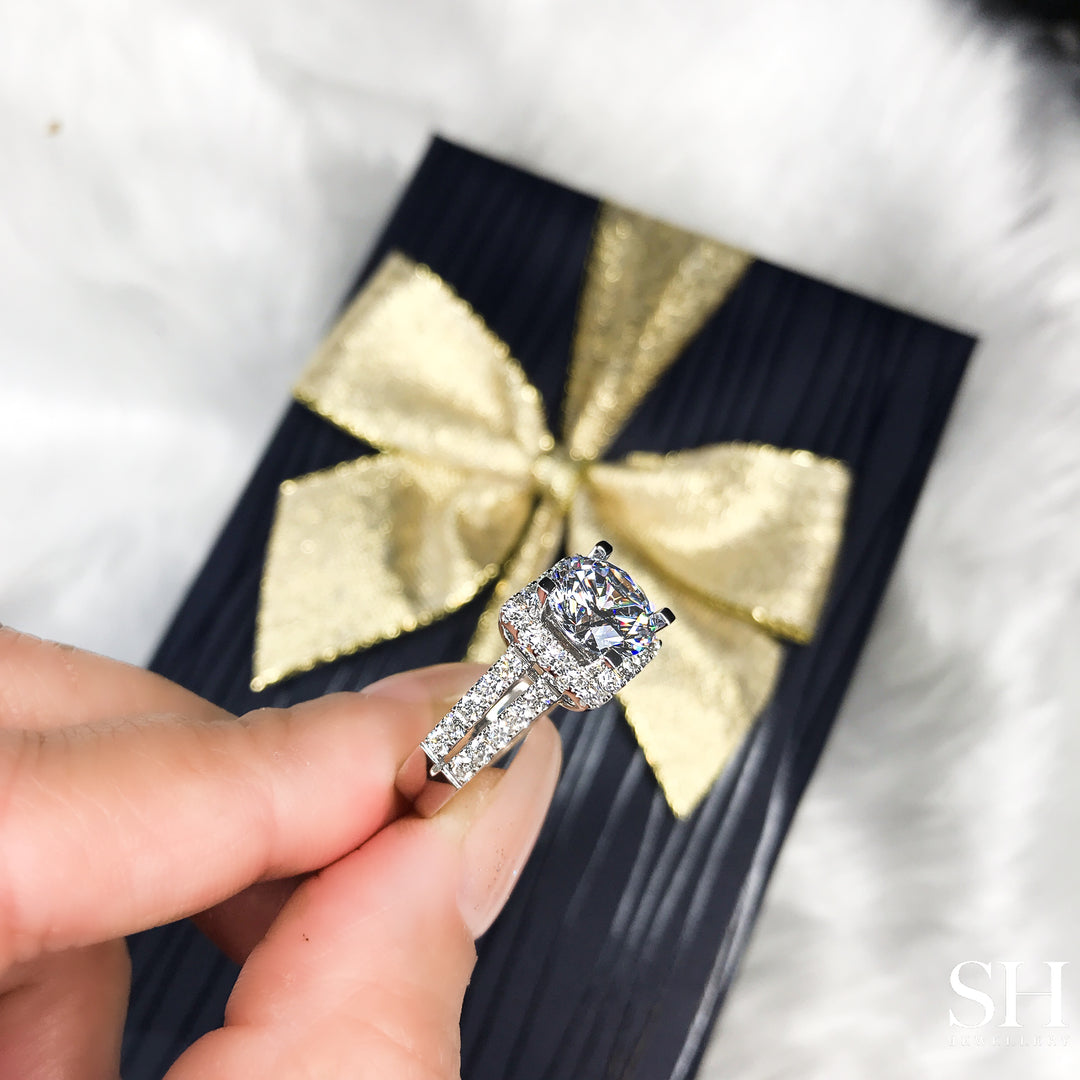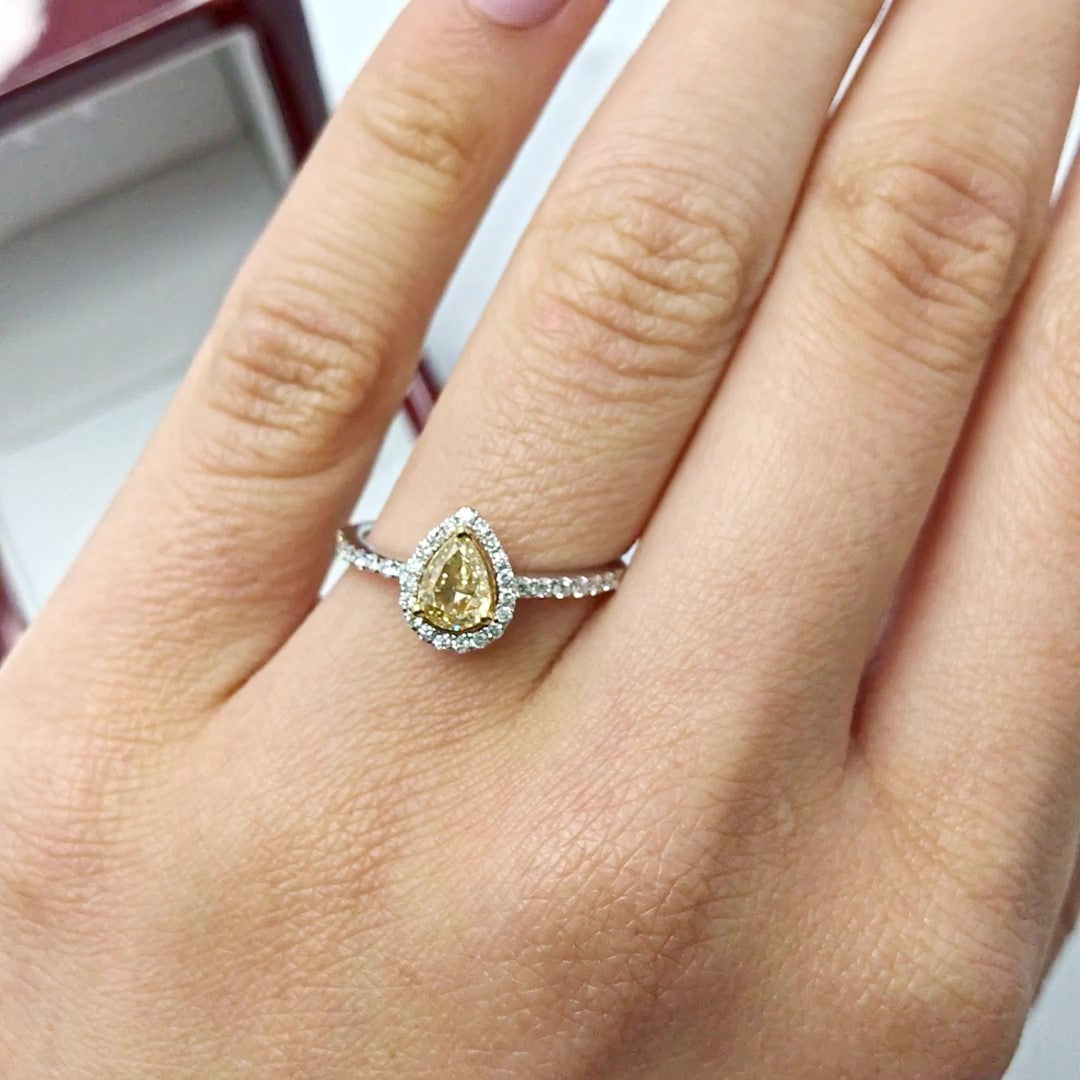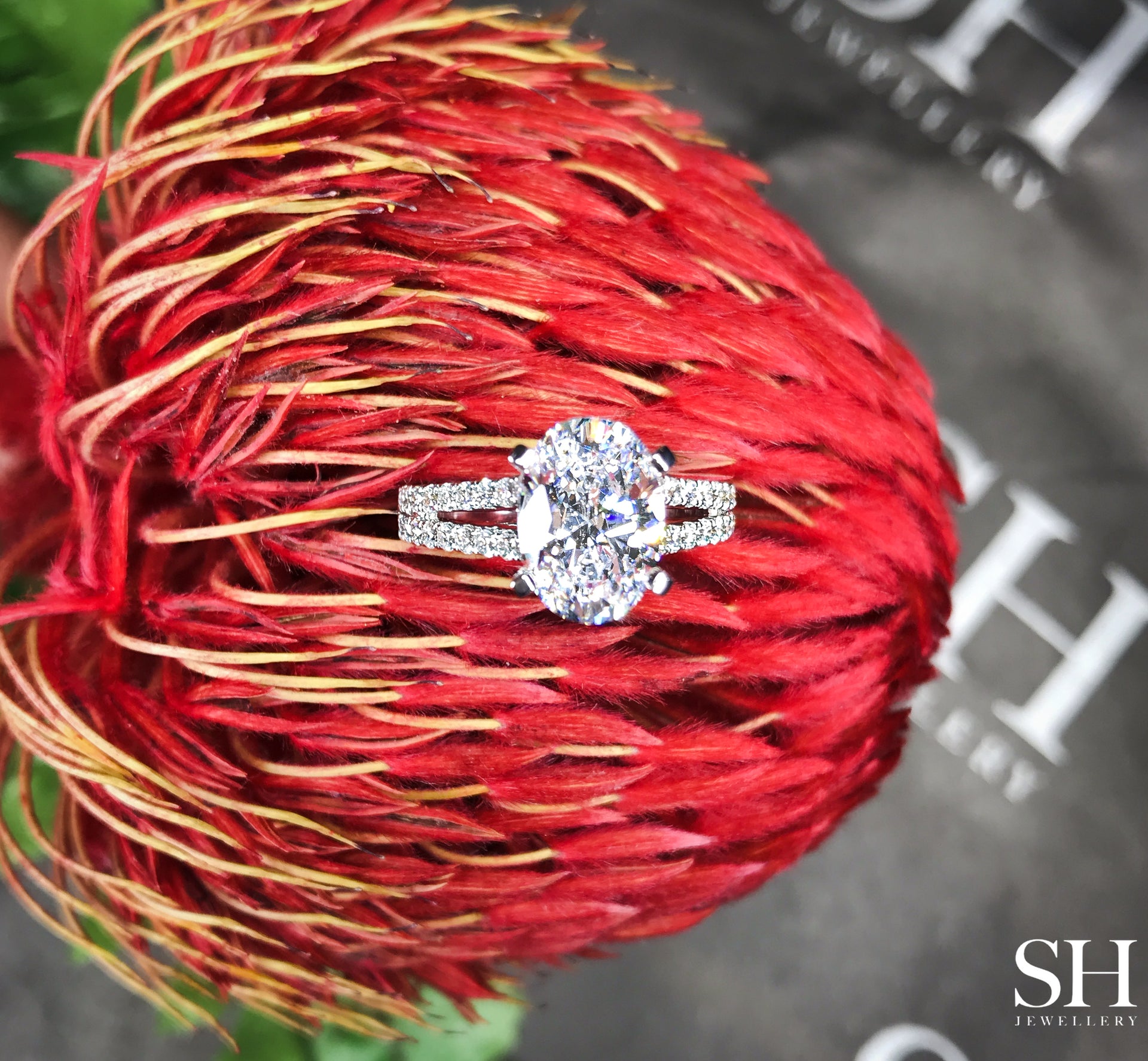
What is Diamond Colour?
Diamond colour is one of the 4Cs of determining diamond quality and refers to any tint found within a diamond. Many people wrongly assume that the majority of diamonds are completely lacking in colour. Despite seeming white at glance, they can possess hints of yellow or brown. These differences influence a diamond’s overall appearance and value, and the benchmark for grading
Diamond Colour Scale
Expert gemologists assess diamond colour using established industry methods, such as the ‘GIA Color Scale’. This diamond colour scale, created by the Gemological Institute of America (GIA) in the early 1950s, is widely acknowledged as the leading standard, and spans from D (colourless) to Z (coloured). This scale is also used by the Diamond Certification Laboratory of Australia (DCLA).
The diamond's colour quality is measured by comparing it to a series of master stones that each signify a grade on the scale. The diamond is positioned facing down to concentrate on its body colour rather than surface glares. The final grade indicates how well the diamond's hue aligns with the desired colourless standard state, depicted in the image above.

Source: Official GIA Colour Scale
Understanding the GIA Diamond Colour Scale
Let’s explore the main categories in the GIA colour grading scale and what they mean for your diamond selection.

Colourless
Diamonds in the D-F range are considered colourless, representing the pinnacle of diamond grading. These stones have no detectable colour when examined under magnification by an expert gemologist. A colourless diamond is highly sought after for its rarity and brilliance, offering an icy, pristine look that pairs beautifully with all diamond setting types. Opting for a colourless diamond ensures maximum sparkle and light reflection, making it the most desirable for those seeking a premium gem.

Near Colourless
Diamonds graded G-H or I-J fall into the near colourless category. These diamonds may have very slight traces of colour, typically only visible when compared side by side with diamonds of higher grades. In most cases, the slight tint is undetectable to the untrained eye, especially when mounted in a setting. Near colourless diamonds provide a great balance between appearance and affordability, offering excellent value while still maintaining a bright and attractive look

Faint Colour
Diamonds with K-M grades exhibit faint colour, which can include a subtle yellow or brown tint. This colour may be slightly more noticeable, especially in larger diamonds or when set in a white metal. However, these diamonds can still be quite beautiful and are an excellent option for those prioritising size or unique appeal over a completely colourless appearance. Often, the faint colour is offset by a carefully chosen setting, making these diamonds a budget-friendly alternative for more affordable engagement rings.

Very Light Colour
Diamonds in the N-R range are classified as very light colour and will display an obvious yellow or brown tint that is visible to the naked eye. While this colour is more apparent, these diamonds can still have a charming warmth, particularly when paired with yellow or rose gold settings. They can be a cost-effective option for buyers looking to maximise the size of their diamond without compromising on brilliance.

Light Colour
At the far end of the scale, S-Z graded diamonds are in the light colour category. These diamonds have a pronounced yellow or brown tint that can be easily seen. Although less traditional in appearance, light colour diamonds can be appealing for those seeking an alternative or vintage-style engagement ring. When set in yellow gold, these diamonds can blend harmoniously with the metal, making the colour less obvious and enhancing their natural beauty.
Does Diamond Colour Matter?
Diamond colour plays a significant role in determining both the appearance and value of a natural diamond. However, the importance of diamond colour can depend on personal preference and your engagement ring budget. For some, the slight warmth of diamonds in the faint or light colour range (K-Z) can be appealing, particularly when paired with the right setting, such as yellow or rose gold vintage-inspired designs, which complements the natural hue. In these cases, a diamond with a lower colour grade can still appear stunning, offering great value without sacrificing beauty.
Ultimately, while colour is an important factor, it’s one of several characteristics (including cut, clarity, and carat) to consider when choosing a diamond. The right choice depends on how much you prioritise colour in comparison to other factors.

FAQs on Diamond Colour
There are coloured diamonds besides white ones, including yellow, brown and even rarer shades, like pink and blue-green. These unique hues are evaluated using a grading system, which considers their scarcity and rich shades.
The best diamond colour is typically considered to be in the D-F range, classified as colourless by the GIA. Diamonds in this range have no visible hue, allowing for maximum light reflection and brilliance. D-grade diamonds are the highest and most rare, while E and F show minimal colour that is only detectable by experts.
However, the "best" colour depends on personal preference, budget, and the setting. Near colourless diamonds (G-J) offer excellent value and can appear colourless to the naked eye, particularly when set in white metals. Ultimately, the best diamond colour is one that fits your desired look and budget.







